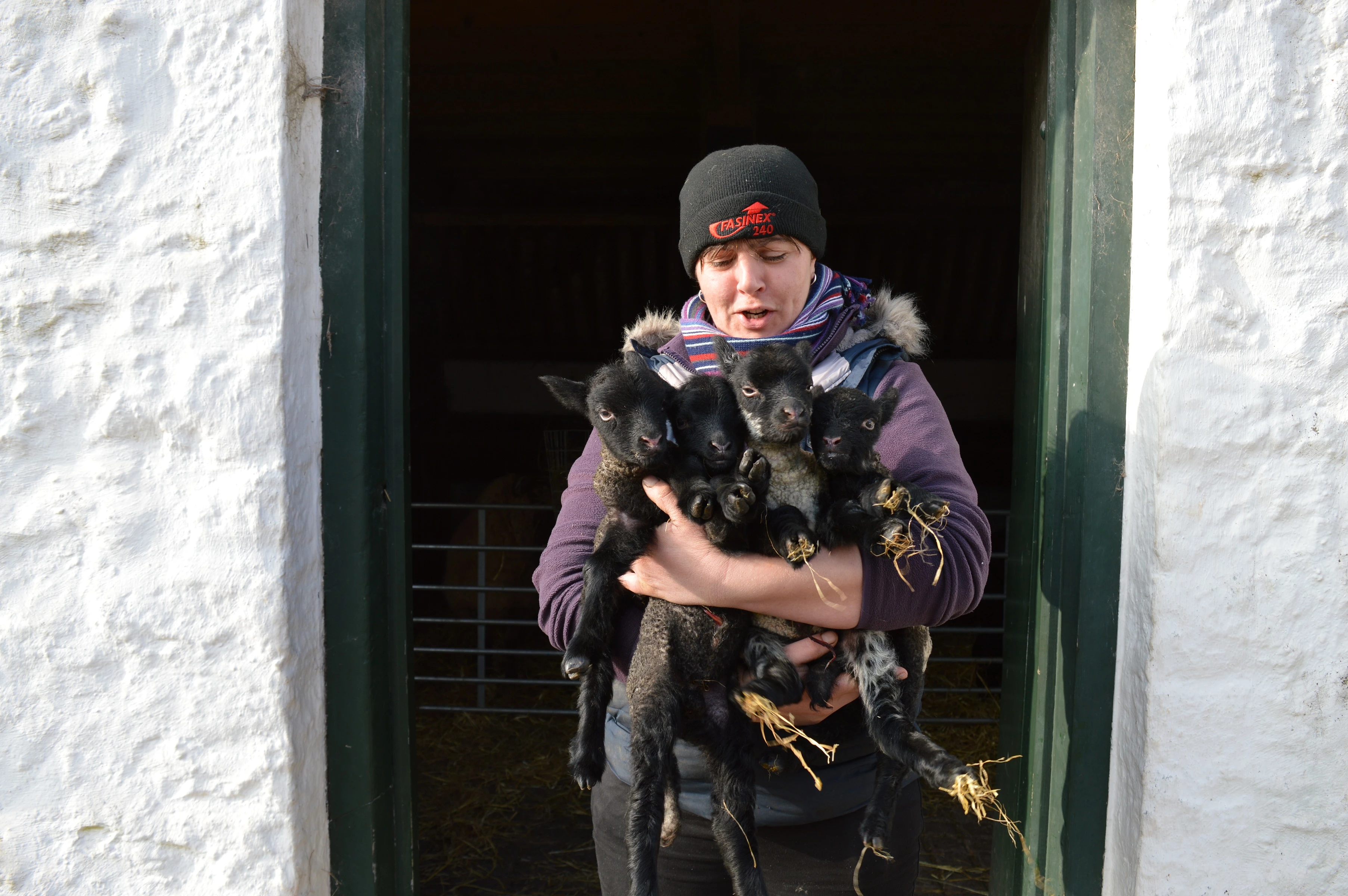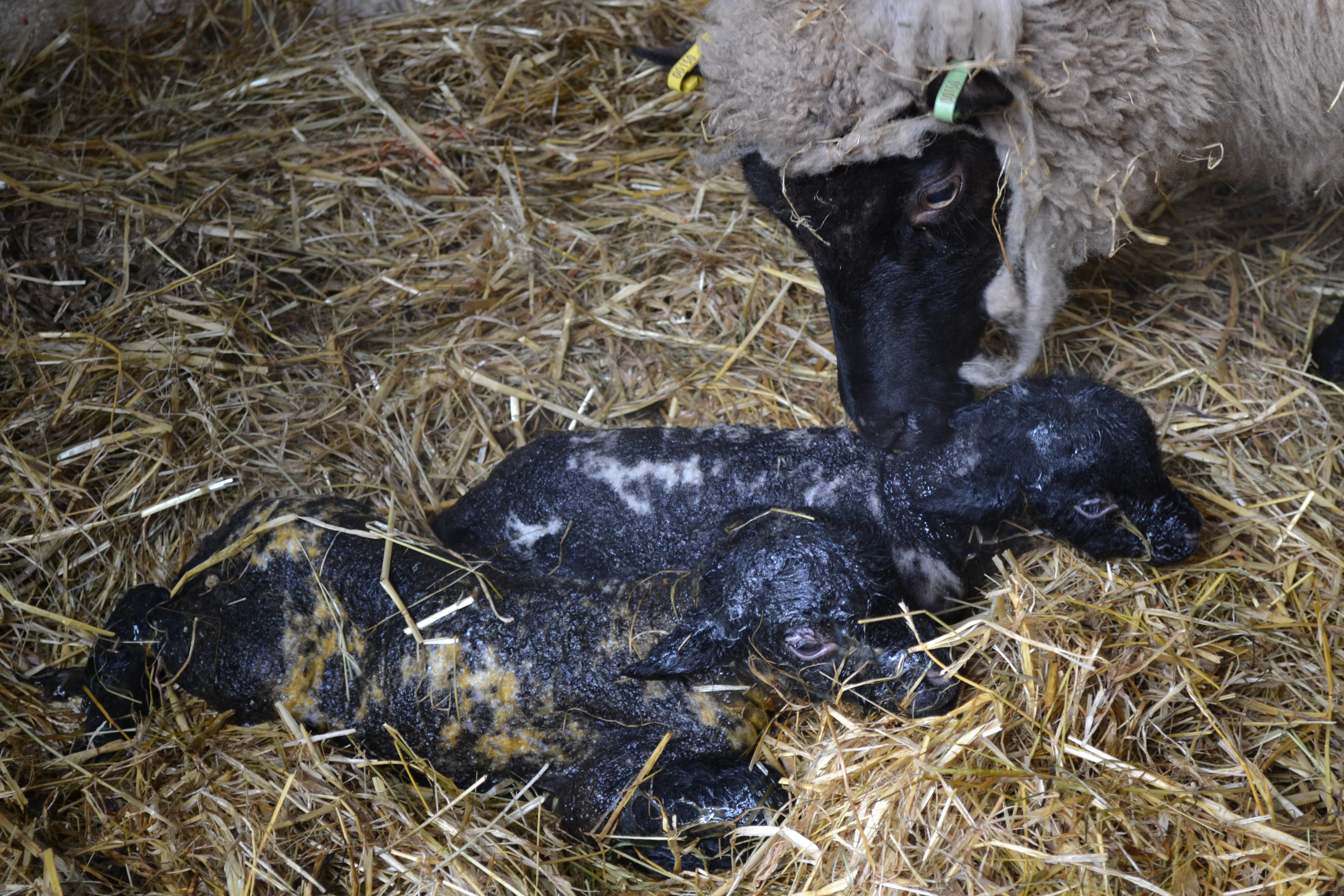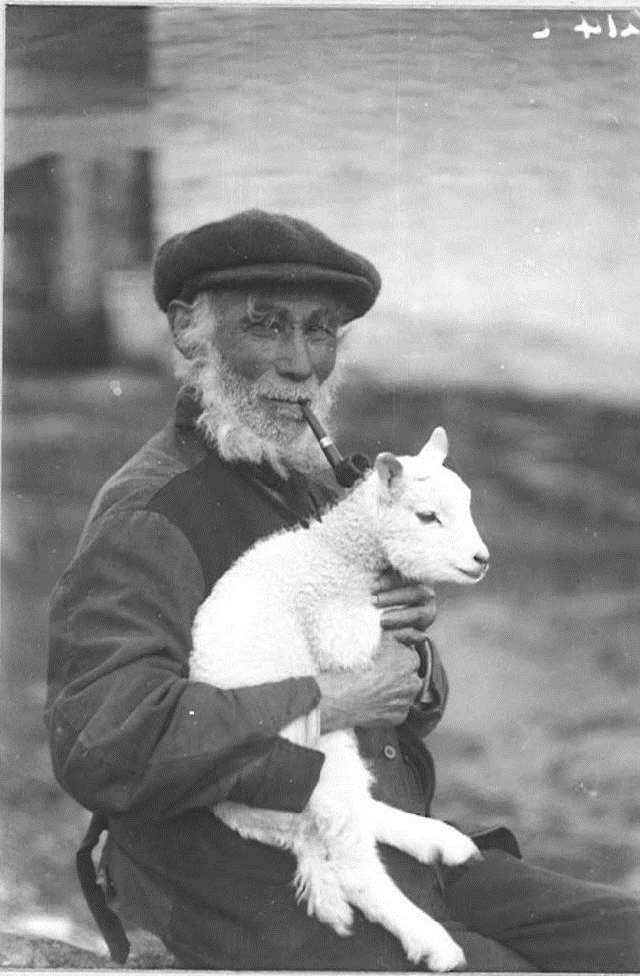Lambing is one of the most important and busiest times of the year on the farm. It means long hours, day and night, watching over and caring for the sheep to ensure their lambs are delivered safely and that they survive the first couple of days. Lambs are a major source of income by being sold for meat, and provide replacement stock for flocks.
The keeping of sheep is such a significant part of farming in Wales because they are suited to the high altitude, damp climate and generally poor land. Sheep can survive and flourish on grass in both upland and lowland areas of Wales. The products from sheep have been wool, meat, milk, skins, and tallow for candles. Also, their manure has been used as fertilizer on the land.
The first sheep brought to Wales were probably small, brown Soay sheep. They came with Neolithic farmers around 6 thousand years ago. The Romans brought with them superior, white-faced sheep whose wool was finer. The sheep were bred only for their wool, for which Roman farmers had a high reputation. These crossed with the Soay sheep, becoming the tan-faced ancestors of the hardy Welsh Mountain sheep, which have inhabited the highlands of Wales for over two thousand years.
By the Middle Ages sheep were most likely kept for their wool and milk rather than meat. Wool dominated until the Industrial Revolution, when the population started growing. This led to an increased demand for meat from the eighteenth century onwards.
Meat became the principal product from sheep and lambs, worth far more than wool in the twentieth century. Today producing fat lambs is the main income for many Welsh upland and hill farms. Exports of Welsh Lamb products were worth £154.7 million in 2013. France is the biggest overseas customer, followed by Germany. There were 9.74 million sheep and lambs in Wales in 2014.








